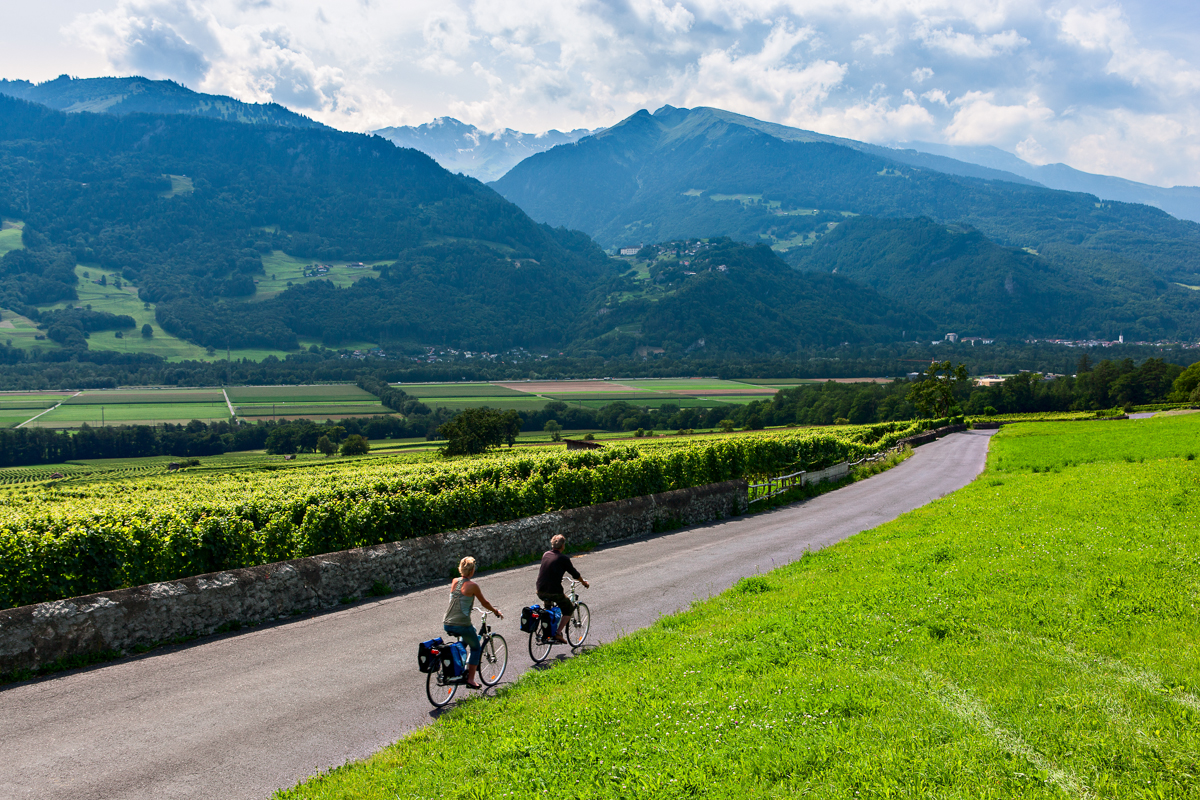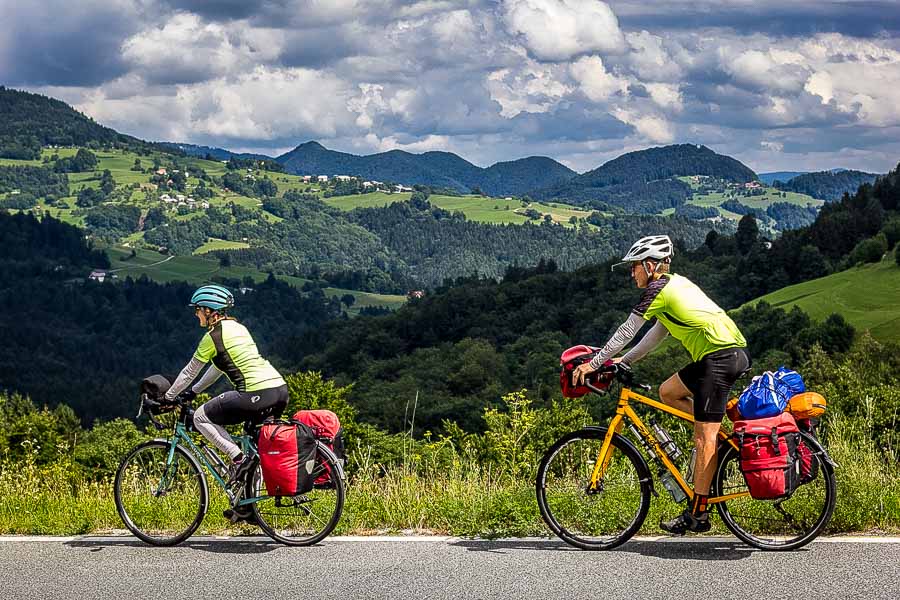The Spend Cycle: How bicycle tourism impacts small communities
Originally posted on March 13, 2018 at 1:16 amBy Jen Sotolongo
In 2009, Bill White of Twin Bridges, Montana, began to notice the long-distance cyclists that were passing through the small town of fewer than 400 inhabitants. They stopped for a coffee or burger and then headed on to the next campground. He realized that “all the bike riders passing through were like gold going by in a river.” Feeling inspired by these cycling pilgrims, he set out to create a space where cyclists would linger for more than just a cup of coffee.
The result: Bike Camp. Working with his local government and community, White developed an overnight stopping point for cycle travelers, complete with a shower, a screened-in building to hide from the mosquitoes, toilets, tables and chairs, a sink and a grill. To spend the night, cyclists could pitch their tent on the surrounding lawn.

As a result of White’s entrepreneurial spirit, the town saw a huge influx in economic growth from cyclists. Restaurants fed the hungry travelers, the local market began carrying a few essential bike parts, the laundromat spun all season long and the local high school donated a permanent bike stand and workstation. By the end of the first season, more than 300 cyclists took advantage of the facilities in Twin Bridges, leaving more than enough donation money to pay off the $9,000 cost for the shelter building.
“Bike tourism favors quieter roads and smaller towns, away from the interstates—and as a result, serves as a lifesaver for many rural communities,” said Jim Sayer, executive director of the Adventure Cycling Association.

Often mislabeled as budget travelers the Outer Banks in North Carolina determined that 87 percent of the visiting cyclists earned more than $50,000 annually, and a full 50 percent earned $100,000 or more. Their subsequent spending bolsters local businesses and small towns as bicycle touring expands and the industry works to meet the growing demand.
“When you have successful cycle routes, many services spring up to cater for the tourists,” says Philipp Halmanns, who works for EuroVelo, the European cycling network that coordinates the development of 15 intercontinental cycling routes across the continent. “The classic example is EuroVelo 6–Atlantic- Black Sea. For many years Budapest marked the farthest east that most cycle tourists would venture. However, some ‘pioneer’ cyclists continued down to Belgrade and as their numbers increased, campsites, guesthouses, bicycle repair shops, cafes and restaurants were established to serve them. The infrastructure developed for cycle tourists can sometimes be used by local communities as well.”

Cyclotourism is good business. A 2012 Travel Oregon study showed that bicycle tourism generated $400 million in economic benefits for the state, creating boons in employment, retail and food services, accommodations and taxes. As the only state in the U.S. with a Scenic Bikeway program—with 15 routes in total, ranging in distance from 23 to 174 miles— cycling makes a significant contribution to Oregon’s tourism economy.
In Germany, 10 percent of all tourism revenues are generated by bicycle tourism, and in the region of Munsterland in particular, 30 percent of all overnight stays arrive on two wheels, according to a 2013 report produced for the Winston Churchill Memorial Trust. In a 2007 Sustainable Tourism CRC study, findings showed that cycle travelers make up 9 percent of all foreign visits in both Denmark and Ireland. The European Cyclists’ Federation determined in 2014 that the total economic impact of cycle touring in Europe totals more than 44 billion euros ($47 billion) annually.

“If one business owner in a small community starts to do something, and then talks about it to others in the community, you’ll see the hospitality start to spread,” said Laura Crawford of The Path Less Pedaled travel site.
To break down a cyclist’s spending habits, Crawford and her partner, Russ Roca of The Path Less Pedaled, compared a cycle tourist to a roadtripper, using a 200-mile stretch of road as an example. An easily manageable distance for a car to travel in a day, roadtrippers might begin in one larger city, stop for lunch, refill their gas tank, and then find dinner and lodging in another larger city, skipping several small towns along the way.

Roca and Crawford found that a cycle tourist, on the other hand, traveling that same route at 50 miles per day requires four days to cover the same distance, and needs four nights of accommodation. Since cyclists burn a lot of calories, they are constantly hungry, yet don’t want to weigh down their ride with heavy food, so they stop at local markets and restaurants to acquire meals and snacks for the day. And it’s not at all uncommon for the tired cycle traveler to wash down their day of hard work with a beer at a local pub. As such, cyclists will stop in every town with a market to stock up on food, fill water bottles, use the bathroom or spend the night. “The more accommodations and services, the more people touring, the more people spending money in small towns,” quoted Roca in a The Path Less Pedaled blog post.
“Another profound impact of bike tourism is the personal connections it fosters between cyclists and people in small towns,” said Sayer. “The most common feedback we get from people riding around the U.S. is that meeting people on the way restores their faith in America, and helps them overcome all the negatives they hear or read in the news.”

Cyclists enter establishments armed with questions: Where can we camp or find accommodation? How far is the next town, and what can we find there? Do you have WiFi?
In turn, curious shop owners ask about their journey. Just imagine, people travel through your tiny town by car all the time, but a cyclist who has spent several weeks traveling the same distance? That is an event.
“Rolling into a small community on a loaded bike, we are more of a curiosity than anything else, and it’s always positive,” said Crawford. “People who might not bat an eye at any other tourist will stop to ask us questions about what we’re doing and what it’s like to bike so far. It’s a rare opportunity to connect with someone that we might not otherwise have a reason to know or interact with, and often we can continue the conversation by learning more about the community itself and the surrounding region.”
